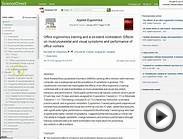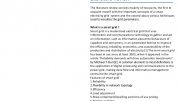When choosing a research topic, ask "What do I want to know?", "what do I already know" and "what are the various components or issues involved"
Have a topic.
1. Identify terms & concepts. Clarify your topic by restating it as a research question.
2. Review related literature to help you focus on how to analyze your topic. As you search and learn about your topic, create a list of synonyms. To find synonyms or descriptors you can: 1) use a thesaurus; 2) look at descriptors or subject terms on a citation/abstract in article databases; 3) use the database's thesaurus or suggestions for terms; 4) ask a librarian.
3. Use background material, introductory chapters in books, articles, etc. Repeat this part of the research process until you satisfactorily hone in on your topic.
4. Find sources which add to your knowledge and extend your argument.
- Look at your problem from your discipline, but also see how other disciplines approach the same problem. For example, research on incarceration, would be covered in criminal justice and legal journals, but also in sociological, psychological and medical journals.
- Look for new ideas, as well as for material with which you may disagree.
Searching Strategically.
1. Know your audience. Your audience or required format will determine type and number of sources.
2. Identify the primary "actors" or stakeholders to help you determine likely sources of information: government documents, newspapers, credible websites, scholarly articles.
3. Use terms and concepts for your topic to build a search strategy.
- Set up your strategy using combining terms with AND, OR, NOT.
- Review and refine results: too broad Focus research by limiting terms: date, geography and selection of scholarly or popular articles. Another way to refine a broad term is to add a keyword. Results too narrow? Are there synonyms you could also use? (Combine terms with OR).
- Use databases and credible websites to support research. Substantiate your information by finding multiple sources. Find new information, discover new terms, and rethink your strategy. Remember research is a process.
4. Follow references in a publication. If you find a chapter in a textbook on your topic, often there will be valuable references that you can mine to find additional references. This snowball method of research is one way to find relevant sources. See Bibliographic Trace tab for more information.
Source: libguides.seattleu.edu
You might also like:



Related posts:
- Thesis literature review Sample
- Literature review outline
- Literature review template
- Literature review Examples
- Literature genres chart

























An individual could find a good example of a literature review at their local Library. A literature review provides an overview of a specific topic, and can be very useful.